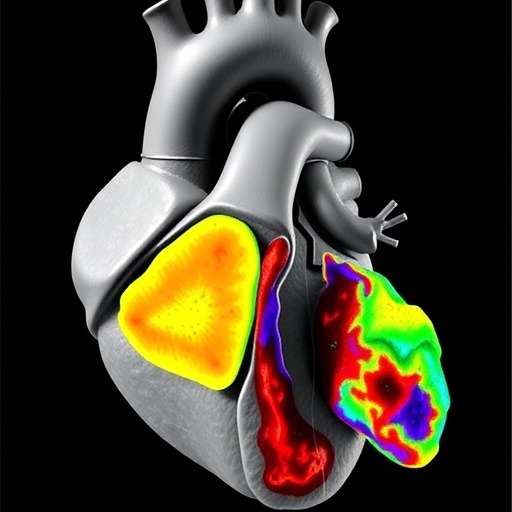A groundbreaking retrospective study led by King’s College London researchers has revealed that the 313-SNP breast cancer polygenic risk score, commonly abbreviated as PRS₃₁₃, holds significant promise as a predictive blood test for future breast cancer risk in women diagnosed with in situ breast conditions. These findings represent a pivotal advance in personalized cancer risk assessment, particularly for those with ductal carcinoma in situ (DCIS) or lobular carcinoma in situ (LCIS), whose risk profiles until now have been difficult to define accurately.
Breast cancer remains the most prevalent form of cancer among women worldwide and constitutes more than 15% of all new cancer diagnoses in the United States alone. The pathological entities DCIS and LCIS are characterized by abnormal cells confined respectively within the breast ducts and lobules, and while non-invasive themselves, have been strongly implicated as precursors to invasive breast cancer. However, clinicians have long grappled with the challenge of discerning which cases of DCIS and LCIS will progress to invasive disease, complicating treatment decisions and often leading to overtreatment or undertreatment.
The PRS₃₁₃ test quantifies breast cancer risk by aggregating the effects of 313 single-nucleotide polymorphisms (SNPs) that have previously been associated with breast cancer susceptibility. These genetic markers collectively provide a polygenic risk profile that reflects an individual’s inherited predisposition. Prior validation of PRS₃₁₃ in populations of women with no prior cancer history demonstrated its capacity to stratify breast cancer risk effectively. This study, relentlessly spearheaded by Jasmine Timbres and senior author Professor Elinor J. Sawyer, positions PRS₃₁₃ as a potentially transformative tool for risk stratification specifically in patients already diagnosed with DCIS or LCIS.
To rigorously evaluate the predictive utility of PRS₃₁₃ in in situ breast disease, the research team delved into comprehensive datasets from two major UK-based cohorts — the ICICLE (ductal carcinoma in situ) and GLACIER (lobular carcinoma in situ) studies. Cumulatively, these databases provided genetic and longitudinal clinical follow-up information for 2,169 women with DCIS and 185 women with LCIS. Applying sophisticated statistical models, the team analyzed the association between patients’ PRS₃₁₃ scores and their subsequent risk of developing invasive breast cancer over time.
The results illuminate critical distinctions in risk profiles based on PRS₃₁₃ quartiles and anatomical tumor locations. Among women with DCIS, those within the highest PRS₃₁₃ quartile exhibited a twofold increase in the likelihood of developing contralateral breast cancer—the manifestation of invasive disease in the breast opposite the site of the initial in situ lesion. Interestingly, the predictive value of PRS₃₁₃ did not extend significantly to ipsilateral breast cancer in DCIS patients, an observation that underscores the complex biology and progression pathways of breast neoplasms.
Conversely, the data revealed a strong dose-response relationship in LCIS patients: as PRS₃₁₃ scores increased, so did the risk of ipsilateral invasive breast cancer, with risk more than doubling per unit increase in the score. These findings suggest that the genetic architecture captured by PRS₃₁₃ may differentially influence localized tumor progression depending on in situ tumor subtype, potentially guiding subtype-specific surveillance and intervention strategies.
A notable aspect of the study is the interaction between family history and polygenic risk scores. Women carrying a familial predisposition to breast cancer exhibited a markedly amplified risk associated with higher PRS₃₁₃ values, surpassing a threefold increase for ipsilateral cancer following LCIS. Remarkably, this risk escalated to fourfold among women without prior mastectomy or radiotherapy, highlighting the importance of integrating genetic risk scores with familial information and treatment history to refine prognostication.
Professor Sawyer elaborated on the clinical implications, emphasizing that LCIS, traditionally considered lower risk than DCIS and often managed conservatively without surgery or hormone therapy, may warrant reconsideration for more aggressive treatment in patients with elevated polygenic risk and familial background. Such tailored therapies could significantly reduce progression to invasive cancer, improving patient outcomes and quality of life.
The study pioneers a paradigm shift in breast cancer risk assessment by advocating a comprehensive approach that transcends histopathological evaluation. As Timbres elucidates, employing PRS₃₁₃ alongside traditional diagnostics offers a nuanced risk profile that empowers women with DCIS or LCIS to make more informed choices regarding their management options, balancing efficacy and potential overtreatment.
Despite promising insights, the study acknowledges inherent limitations. The PRS₃₁₃ was originally optimized for invasive breast cancer risk prediction, thus it may not capture genetic variants specifically implicated in in situ lesions that remain to be discovered. Additionally, the limited LCIS sample size constrains the statistical power to detect more subtle associations, warranting validation in larger, more diverse populations.
Funding support for the research was provided by Breast Cancer Now, Cancer Research UK, and the Biomedical Research Centre at Guy’s and St Thomas’ NHS Foundation Trust and King’s College London. Both lead and senior authors report no conflicts of interest, underscoring the study’s integrity and scientific rigor.
These compelling findings herald a new frontier in precision oncology, where polygenic risk scoring complements existing histological and clinical parameters to tailor breast cancer prevention and treatment strategies. As further validation and technological advancements unfold, integrating PRS₃₁₃ into clinical workflows may revolutionize how clinicians assess risk and personalize care for women with in situ breast disease, ultimately mitigating the burden of invasive breast cancer on a global scale.
Subject of Research: Breast cancer risk prediction using a 313-SNP polygenic risk score in patients with ductal and lobular carcinoma in situ
Article Title: Breast Cancer Polygenic Risk Score Associated With Outcomes After In Situ Breast Disease
News Publication Date: 1-Oct-2025
Web References:
Cancer Epidemiology, Biomarkers & Prevention
ICICLE Study
GLACIER Study
PRS₃₁₃ Validation Study
References: DOI: 10.1158/1055-9965.EPI-25-0529
Keywords: Breast cancer, Polygenic risk score, DCIS, LCIS, Genetic risk, Cancer epidemiology, Personalized medicine, In situ breast disease
Tags: advancements in cancer researchbreast cancer risk assessmentcancer risk prediction modelsductal carcinoma in situearly-stage breast cancergenetic markers for breast cancerlobular carcinoma in situpersonalized medicine in oncologypolygenic risk scorespredictive blood tests for cancersingle-nucleotide polymorphismswomen’s health and cancer





